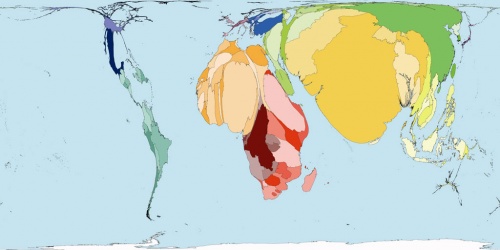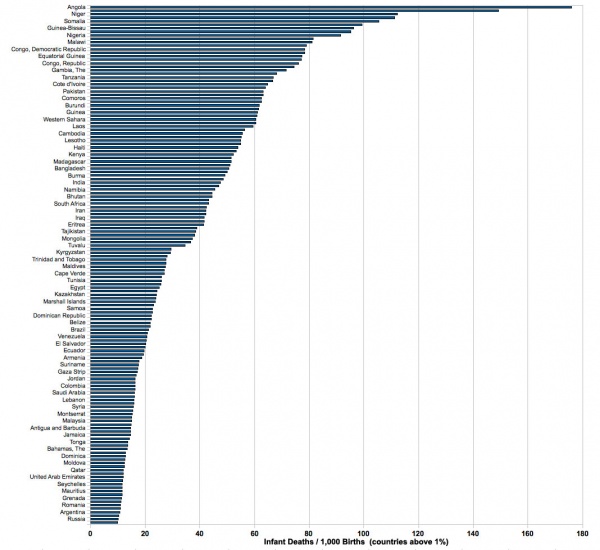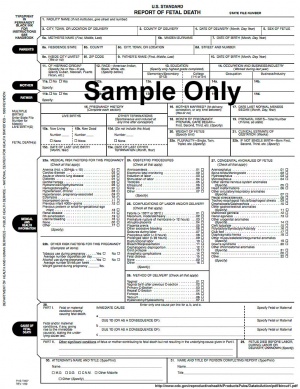Birth - Stillbirth and Perinatal Death: Difference between revisions
No edit summary |
mNo edit summary |
||
| Line 21: | Line 21: | ||
|-bgcolor="F5FAFF" | |-bgcolor="F5FAFF" | ||
| | | | ||
* '''Perinatal mortality following assisted reproductive technology treatment in Australia and New Zealand, a public health approach for international reporting of perinatal mortality.'''<ref name="PMID24044524"><pubmed>24044524</pubmed></ref> "There is a need to have uniformed reporting of perinatal mortality for births following assisted reproductive technology (ART) treatment to enable international comparison and benchmarking of ART practice." [[Assisted Reproductive Technology]] | |||
* '''Neonatal Mortality Levels for 193 Countries in 2009 with Trends since 1990: A Systematic Analysis of Progress, Projections, and Priorities.'''<ref name="PMID21918640"><pubmed>21918640</pubmed>| [http://www.plosmedicine.org/article/info%3Adoi%2F10.1371%2Fjournal.pmed.1001080 PLoS Med.]</ref> " In 2009, an estimated 3.3 million babies died in the first month of life-compared with 4.6 million neonatal deaths in 1990-and more than half of all neonatal deaths occurred in five countries of the world (44% of global livebirths): India 27.8% (19.6% of global livebirths), Nigeria 7.2% (4.5%), Pakistan 6.9% (4.0%), China 6.4% (13.4%), and Democratic Republic of the Congo 4.6% (2.1%)." | * '''Neonatal Mortality Levels for 193 Countries in 2009 with Trends since 1990: A Systematic Analysis of Progress, Projections, and Priorities.'''<ref name="PMID21918640"><pubmed>21918640</pubmed>| [http://www.plosmedicine.org/article/info%3Adoi%2F10.1371%2Fjournal.pmed.1001080 PLoS Med.]</ref> " In 2009, an estimated 3.3 million babies died in the first month of life-compared with 4.6 million neonatal deaths in 1990-and more than half of all neonatal deaths occurred in five countries of the world (44% of global livebirths): India 27.8% (19.6% of global livebirths), Nigeria 7.2% (4.5%), Pakistan 6.9% (4.0%), China 6.4% (13.4%), and Democratic Republic of the Congo 4.6% (2.1%)." | ||
Revision as of 03:07, 29 September 2013

Introduction
The perinatal period is the early postnatal period relating to the birth, statistically it includes the period up to 7 days after birth. Neonatal period is the four weeks/month after birth. Stillbirth and perinatal death can be classified by a number of different systems, all still have "unexplained" or "other" as a potential option. in several systems contribute to many of these deaths. Neonatal deaths include a broader age range of infants who have also died after birth from various causes.
Stillbirths with a gestational age of 28 weeks or more are defined as "late fetal deaths".
There are several death classification systems used in different countries around the world, the most recent are the suggested ReCoDe (UK, 2005), the modified Whitfield (Australia/New Zealand, 2004), and the World Health Organization's International Classification of Disease (ICD-10) systems.
A common stillbirth classification is still "unexplained", with recent analysis of data showing fetal growth restriction is a common antecedent.
Some Recent Findings
|
World High Rate Countries
Graph shows the number of infant deaths / 1,000 live births for countries above 1%.
Australian Data
| Australian Perinatal Deaths | ||||||||||
|---|---|---|---|---|---|---|---|---|---|---|
| Year | 2000 | 2001 | 2002 | 2003 | 2004 | 2005 | 2006 | 2007 | 2008 | 2009 |
| Rate | 10.1 | 10.4 | 9.8 | 9.8 | 9.9 | 10.6 | 9.2 | 8.8 | 8.4 | 9.0 |
| Number | 2,534 | 2,571 | 2,475 | 2,480 | 2,541 | 2,769 | 2,459 | 2,532 | 2,501 | 2,671 |
- Perinatal deaths are all fetal deaths (at least 20 weeks gestation or at least 400 grams birth weight) plus all neonatal deaths (death of a live born baby within 28 completed days of birth).
- Perinatal death rates are calculated per 1,000 all births for the calendar year.
- Source: ABS Births, Australia, 2009 (cat. no. 3301.0); ABS Perinatal Deaths, Australia, 2009 (cat. no. 3304.0).
NSW
In New South Wales (2002) 613 perinatal deaths were reported.
- Unexplained antepartum deaths: 26.3% of perinatal deaths (or 39.2% of stillbirths)
- Spontaneous preterm labour: 20.6% (less than 37 weeks gestation)
- Congenital abnormality: 16.8%
- Antepartum haemorrhage: 8.5%
- Specific perinatal conditions: 7.3%, of which twin-twin transfusion accounted for 2.3% of deaths
- Hypertension (high blood pressure): 5.5%
- Perinatal infection: 4.4%
- Maternal disease: 4.4%
- Hypoxic peripartum death: 3.8%
Neonatal deaths (four weeks/month after birth)
- extreme prematurity was most common cause (39.6%)
- congenital abnormality (19.3%)
- neurological disease (13.4%)
- cardio-respiratory conditions (11.9%)
- infection (8.4%)
Data: Report of the New South Wales Chief Health Officer, 2004 accessed 19Oct05
USA Data
Leading causes of infant death for 2005:[8]
- Congenital malformations, deformations and chromosomal abnormalities
- Disorders related to short gestation and low birthweight, not elsewhere classified
- Sudden infant death syndrome
- Newborn affected by maternal complications of pregnancy
- Newborn affected by complications of placenta, cord and membranes
- Accidents (unintentional injuries); Respiratory distress of newborn
- Bacterial sepsis of newborn
- Neonatal hemorrhage
- Necrotizing enterocolitis of newborn.
Fetal Death Information
- 2003 Revisions of the U.S. Standard Certificates of Live Birth and Death and the Fetal Death Report. The revision process is generally carried out every 10 to 15 years.
- Maternal, Paternal and medical and health information is collected.
CAUSE/CONDITIONS CONTRIBUTING TO FETAL DEATH
- INITIATING CAUSE/CONDITION
- OTHER SIGNIFICANT CAUSES OR CONDITIONS
- WEIGHT OF FETUS (grams preferred, specify unit)
- ESTIMATED TIME OF FETAL DEATH
- WAS AN AUTOPSY PERFORMED?
- WAS A HISTOLOGICAL PLACENTAL EXAMINATION PERFORMED?
- WERE AUTOPSY OR HISTOLOGICAL PLACENTAL EXAMINATION RESULTS USED IN DETERMINING THE CAUSE OF FETAL DEATH?
Links: 2003 Revisions of the U.S. Standard Certificates of Live Birth and Death and the Fetal Death Report
Conditions Associated with Stillbirth
Based upon the 2007 National Institute of Child Health and Human Development workshop. [7]
Infection
- Severe maternal illness
- Placental infection leading to hypoxemia
- Fetal infection leading to congenital deformity
- Fetal infection leading damage of a vital organ
- Precipitating preterm labor with the fetus dying in labor
Maternal medical conditions
- Hypertensive disorders
- Diabetes mellitus
- Thyroid disease
- Renal disease
- Liver disease
- Connective tissue disease (systemic lupus erythematosus)
- Cholestasis
Other
- Antiphospholipid syndrome
- Heritable thrombophilias
- Red cell alloimmunization
- Platelet alloimmunization
- Congenital anomaly and malformations
- Chromosomal abnormalities including confined placental mosaicism
- Fetomaternal hemorrhage
- Fetal growth restriction
- Placental abnormalities including vasa previa and placental abruption
- Umbilical cord pathology including velamentous insertion, prolapse, occlusion and entanglement
- Multifetal gestation including twin–twin transfusion syndrome and twin reverse arterial perfusion
- Amniotic band sequence
- Central nervous system lesions
References
Reviews
Articles
Search PubMed
July 2010 "Perinatal Death" All (8144) Review (899) Free Full Text (1129)
Search Pubmed: Stillbirth | Perinatal Death
External Links
External Links Notice - The dynamic nature of the internet may mean that some of these listed links may no longer function. If the link no longer works search the web with the link text or name. Links to any external commercial sites are provided for information purposes only and should never be considered an endorsement. UNSW Embryology is provided as an educational resource with no clinical information or commercial affiliation.
Glossary Links
- Glossary: A | B | C | D | E | F | G | H | I | J | K | L | M | N | O | P | Q | R | S | T | U | V | W | X | Y | Z | Numbers | Symbols | Term Link
Cite this page: Hill, M.A. (2024, April 19) Embryology Birth - Stillbirth and Perinatal Death. Retrieved from https://embryology.med.unsw.edu.au/embryology/index.php/Birth_-_Stillbirth_and_Perinatal_Death
- © Dr Mark Hill 2024, UNSW Embryology ISBN: 978 0 7334 2609 4 - UNSW CRICOS Provider Code No. 00098G



